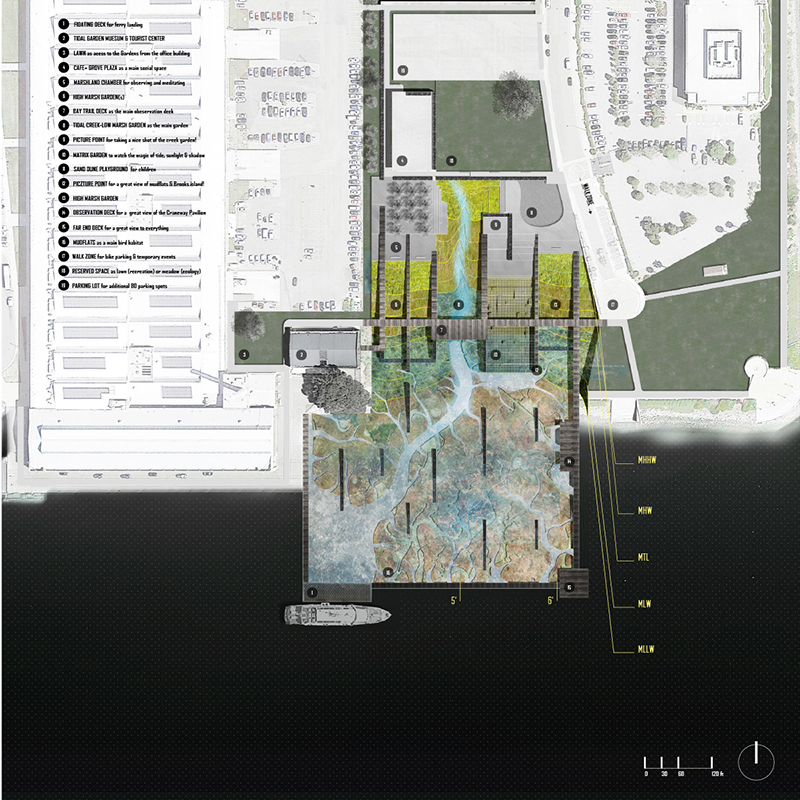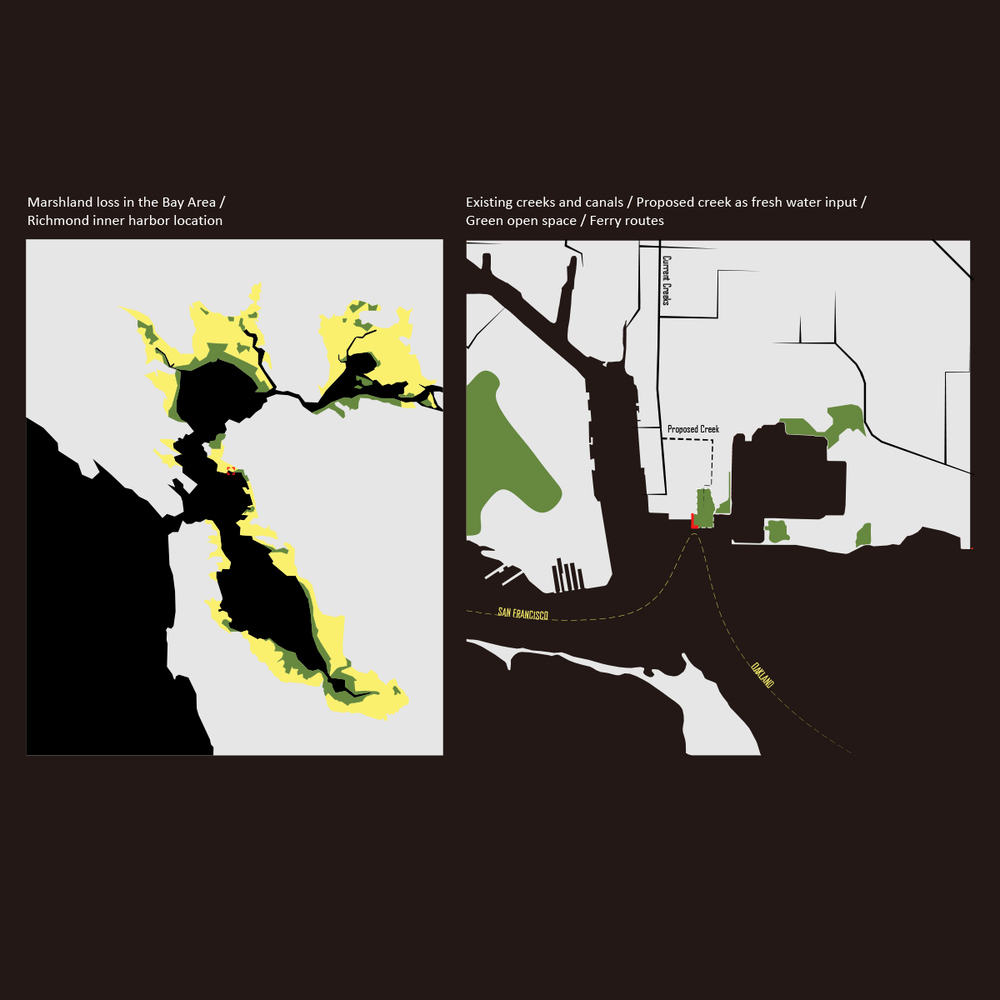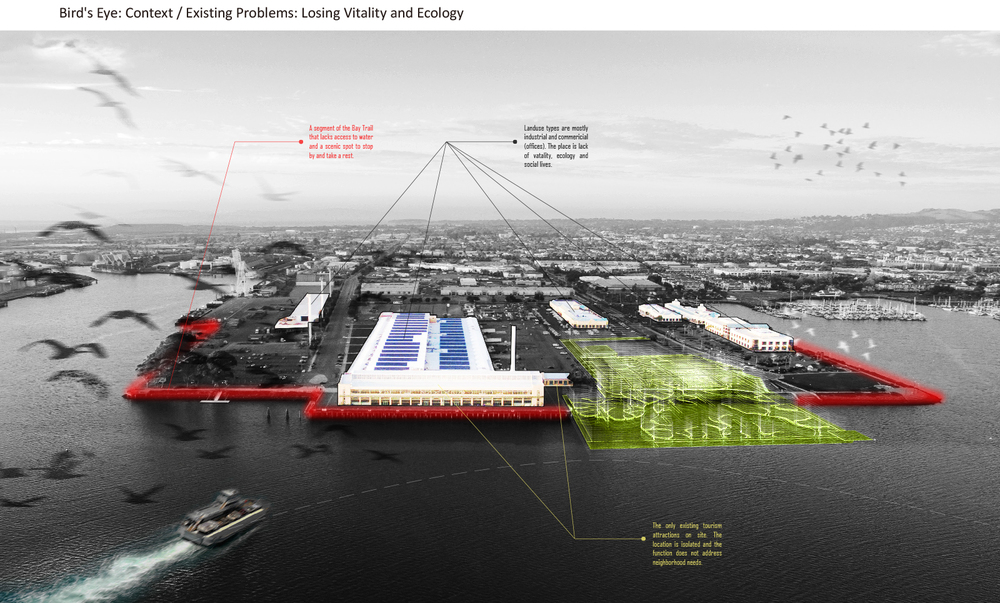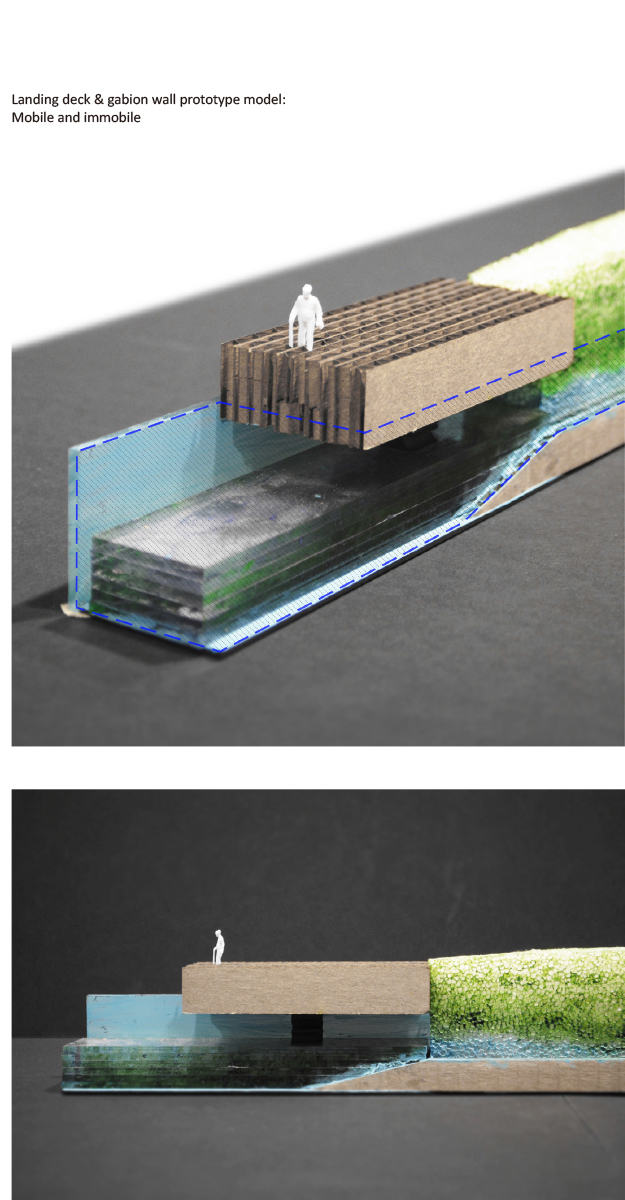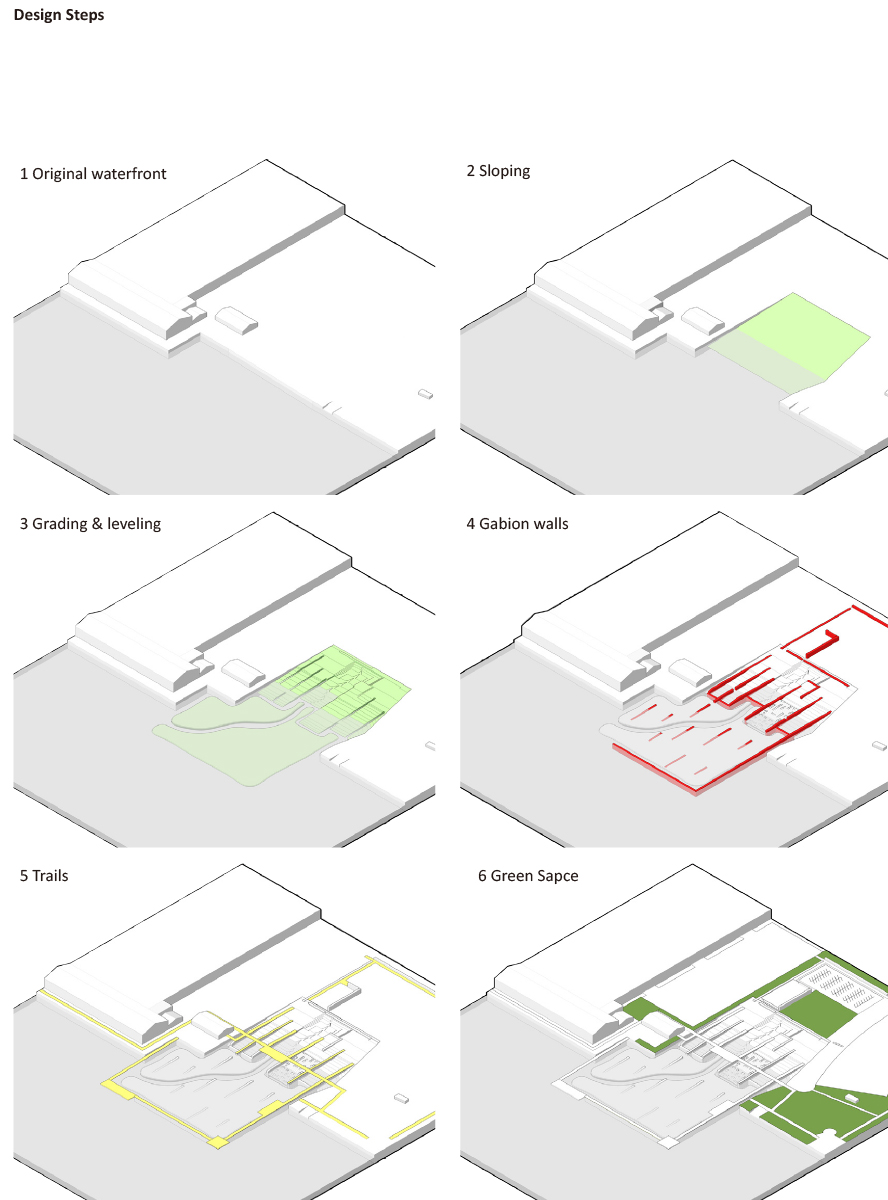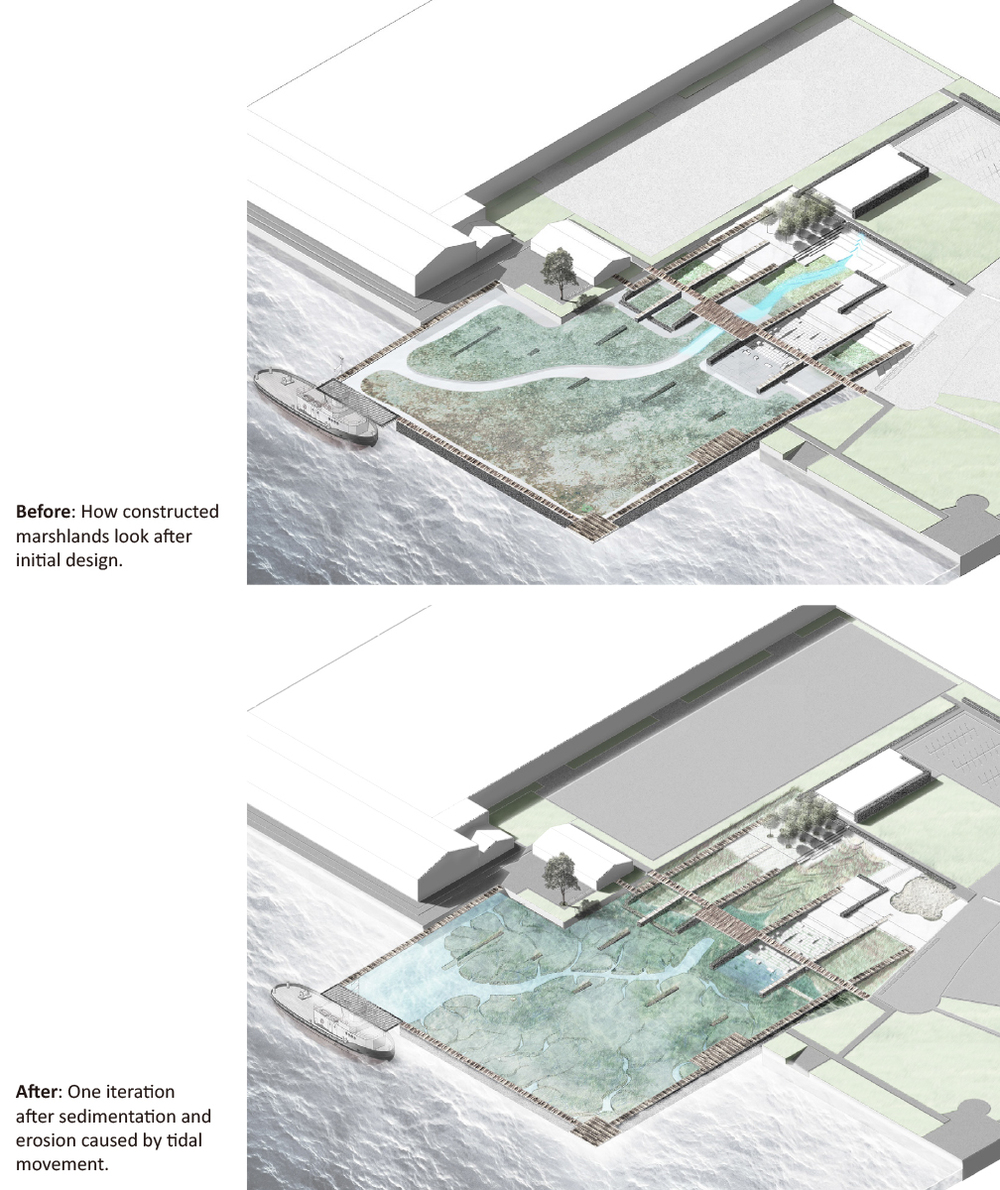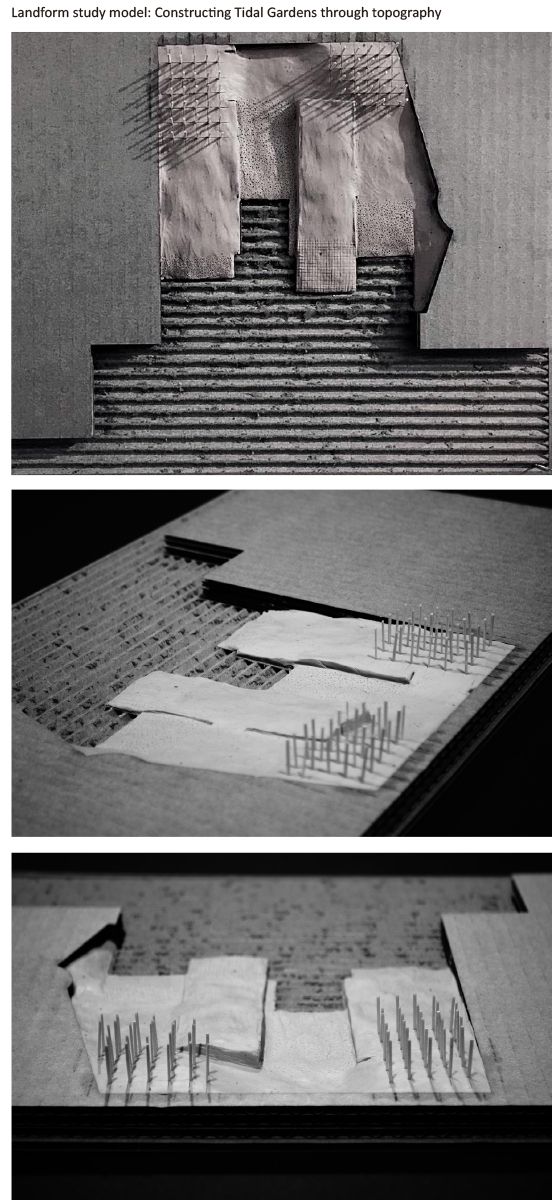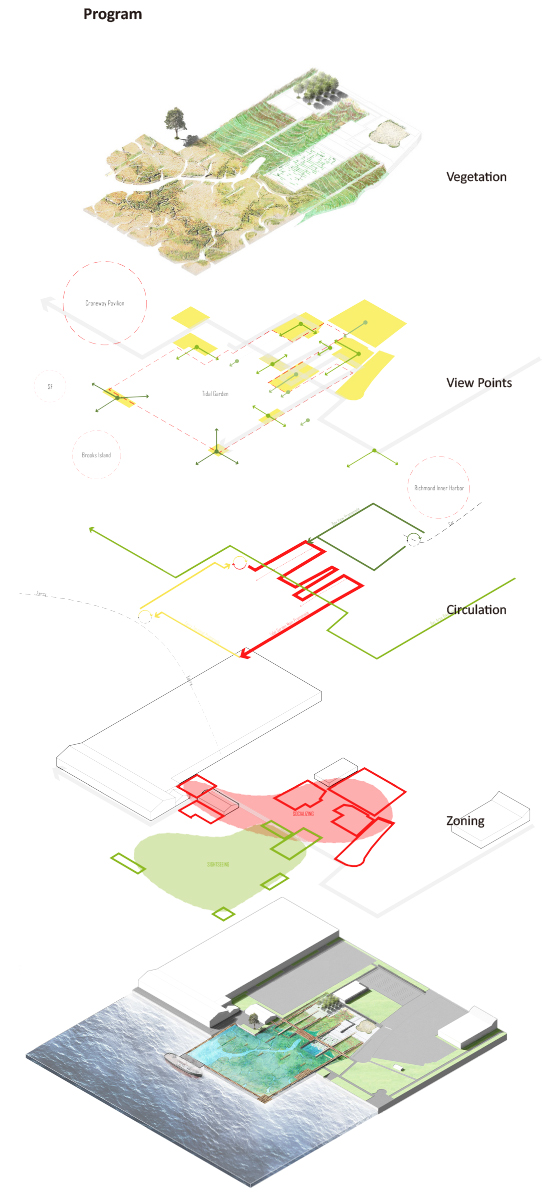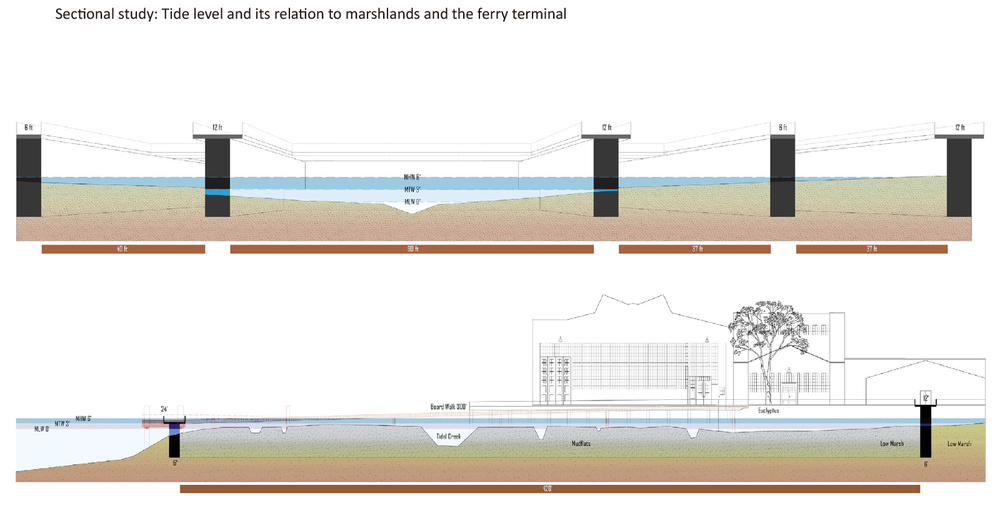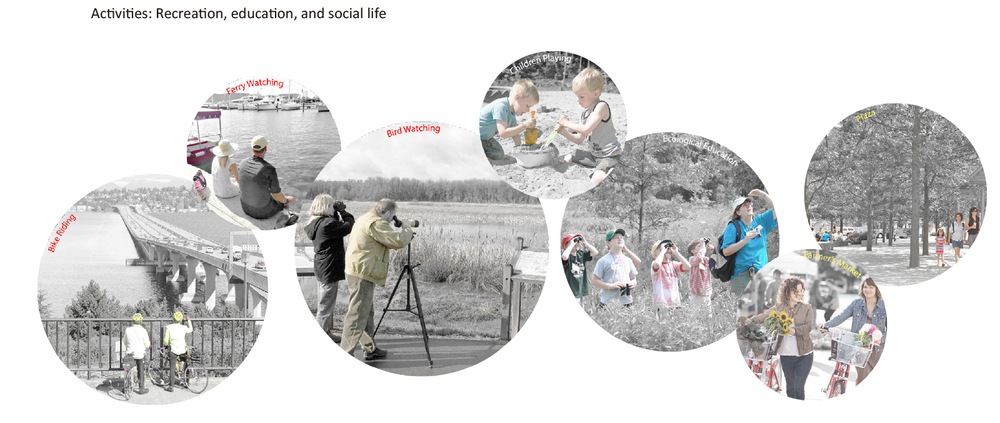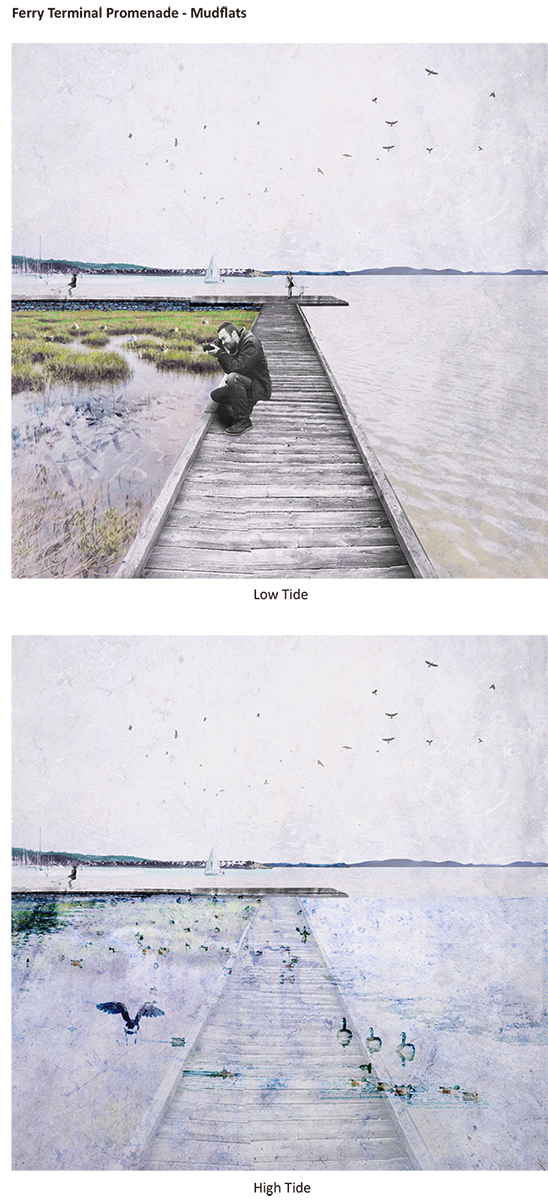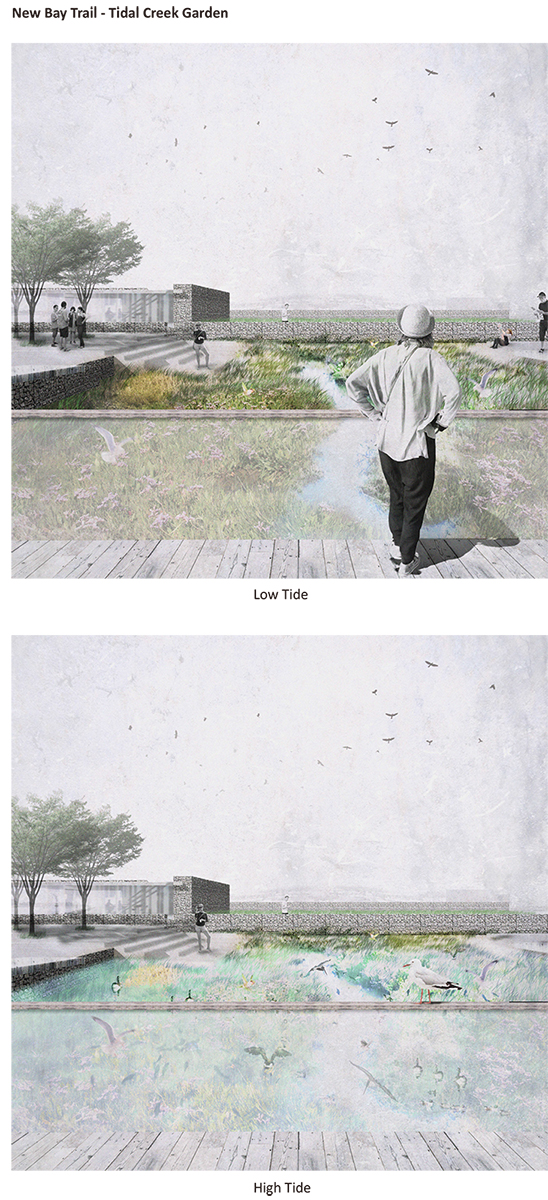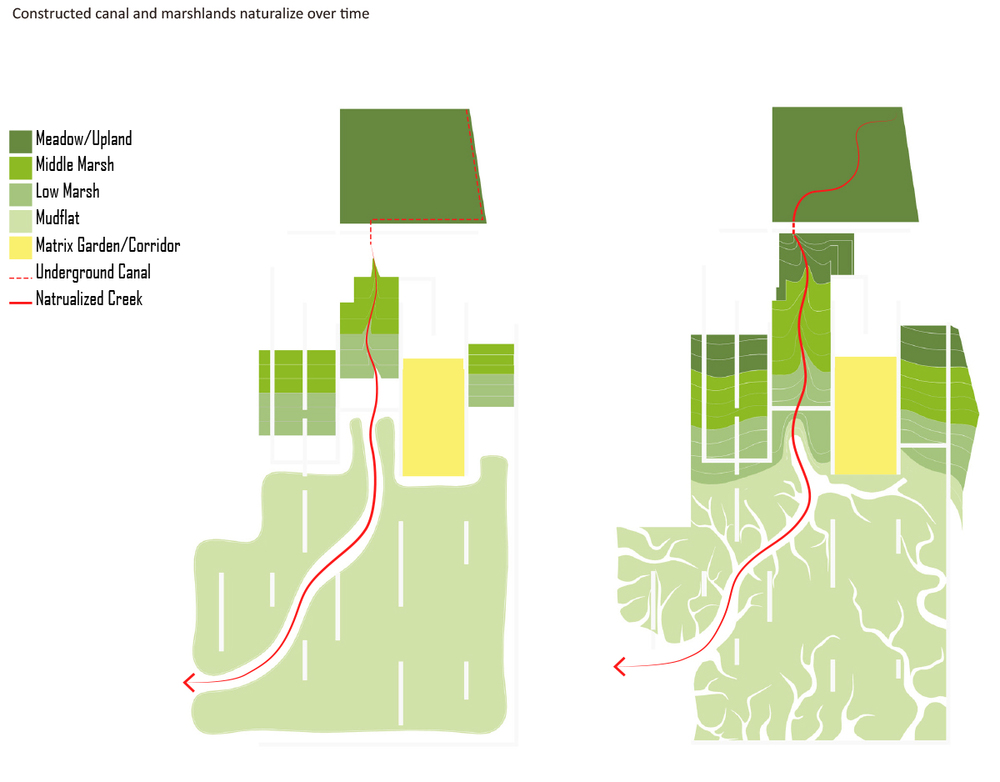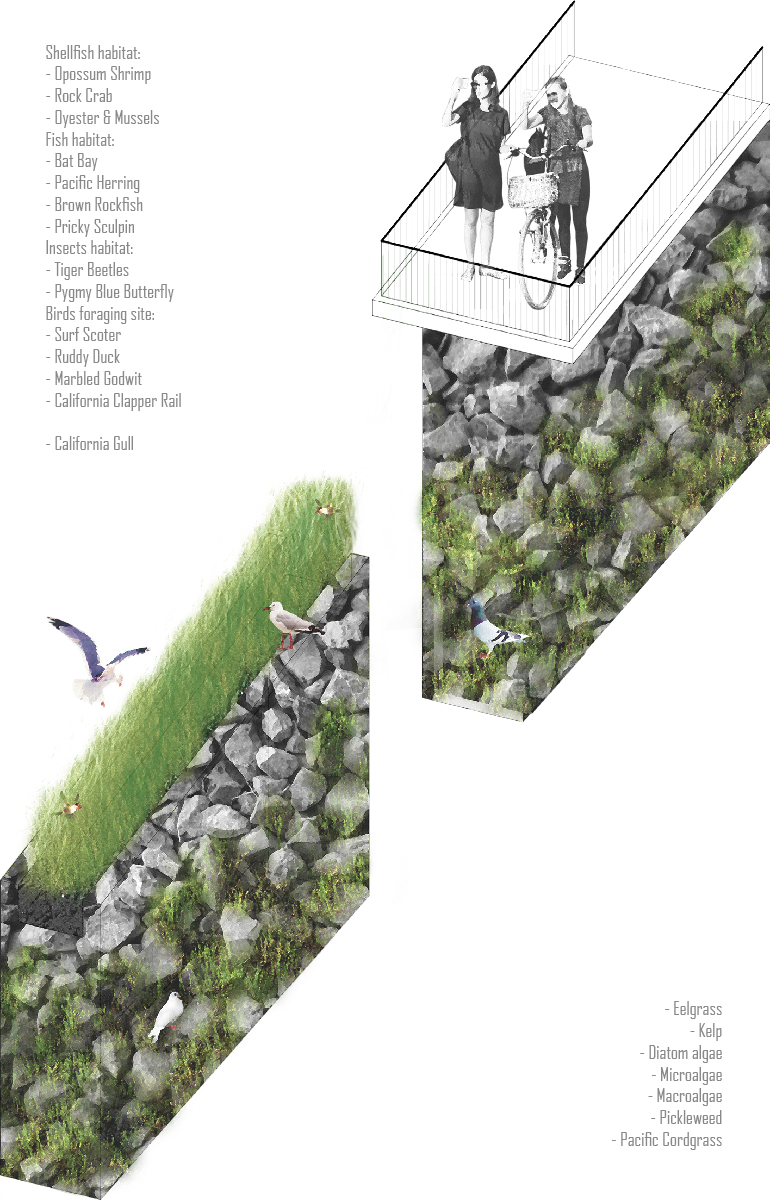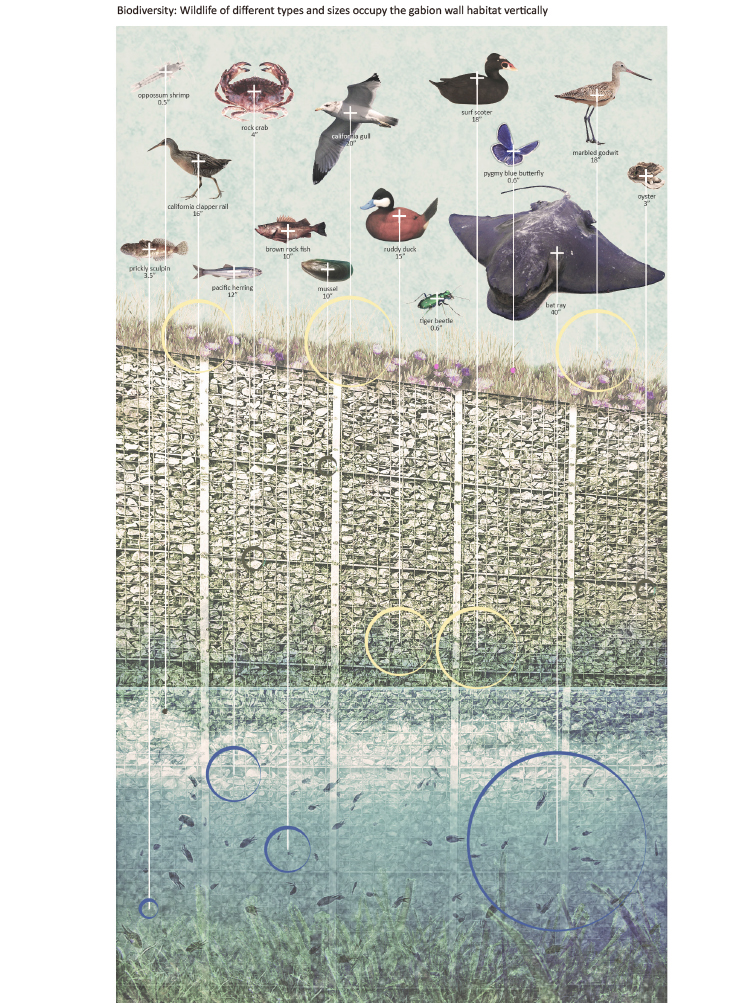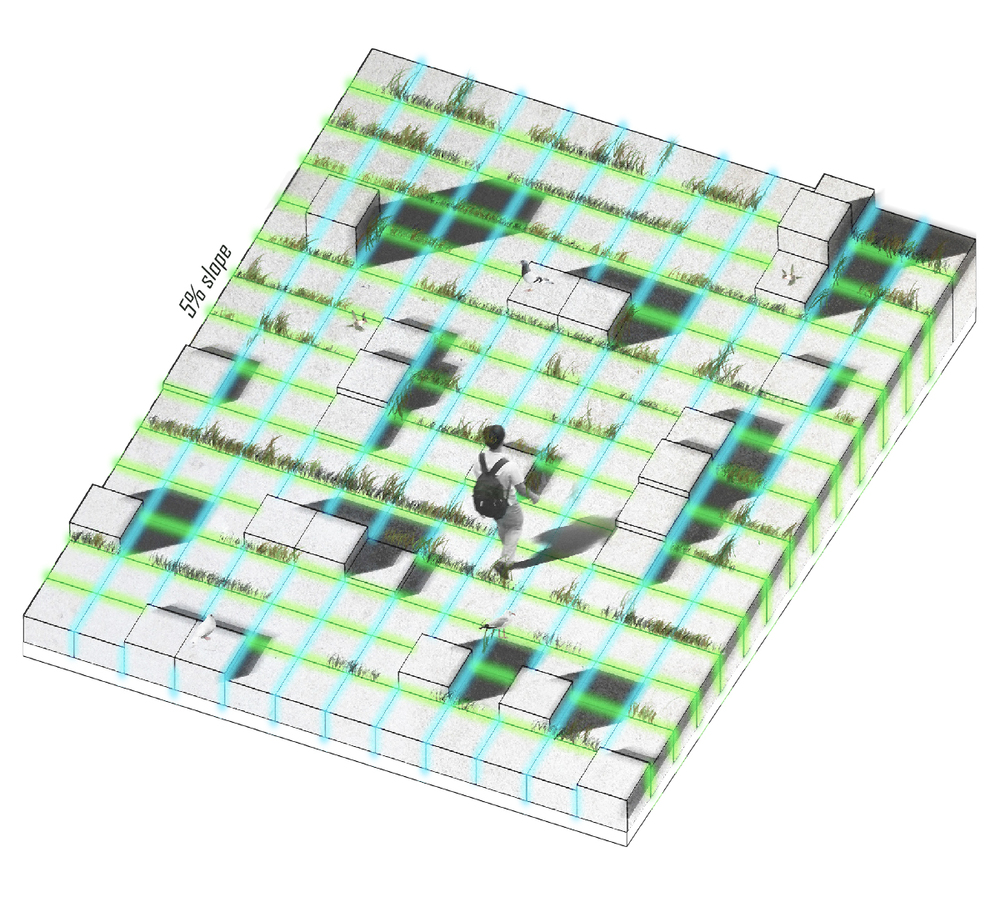Richmond Ferry Terminal Proposal
Tidal Gardens, A Resilient Constructed Marshland Prototype
Yang (Alex) Liu
San Francisco Bay estuary has been continually losing marshlands due to human activities and sea level rise over the last century. This design proposal of Richmond Tidal Gardens is a prototype to test the possibilities of creating marshlands through human construction and maintenance. The design seeking for flexibility and resilience to allow the constructed marshlands grow and naturalize over time.
The most important ecological process of marshlands formation is sedimentation. Sedimentation is the tendency for particles in suspension to settle out of the fluid in which they are en-trained and come to rest against a barrier. Gabion is proposed as a key design feature to achieve this process. Gabion walls are constructed not only to imitate certain geographic features in the natural marshlands, but also as the base of board walks to allow human to walk on. As a result, Tidal Gardens consist of two parts: A flexible part that allows marshland ecosystem to emerge, grow, and expand; and a static part that caters to tourism, social and recreational activities.
The Tidal Gardens are also a part of the new Richmond Ferry Terminal that connects to San Francisco and Oakland. It transforms the Ferry Terminal into an educational center that introduces the history and future of the Bay Area waterfront to the surrounding community and tourists to this site.
How to delineate: This design 'breaks' the bay trail (the line) at one point, 'takes' one small segment of it and 'thickens' it with the Tidal Gardens. When thinking about the design for shorelines, it is critical to not only see it as a line lies horizontally to the shore, but also to notice its 'thickness'. When water meets the land, it is the depths of the border that creates the new ecosystem: marshlands. The design 'draws' lines with gabion walls perpendicularly to the shoreline to delineate people's experience in the Tidal Gardens.
